March 2020
2003 BMW R1150RT
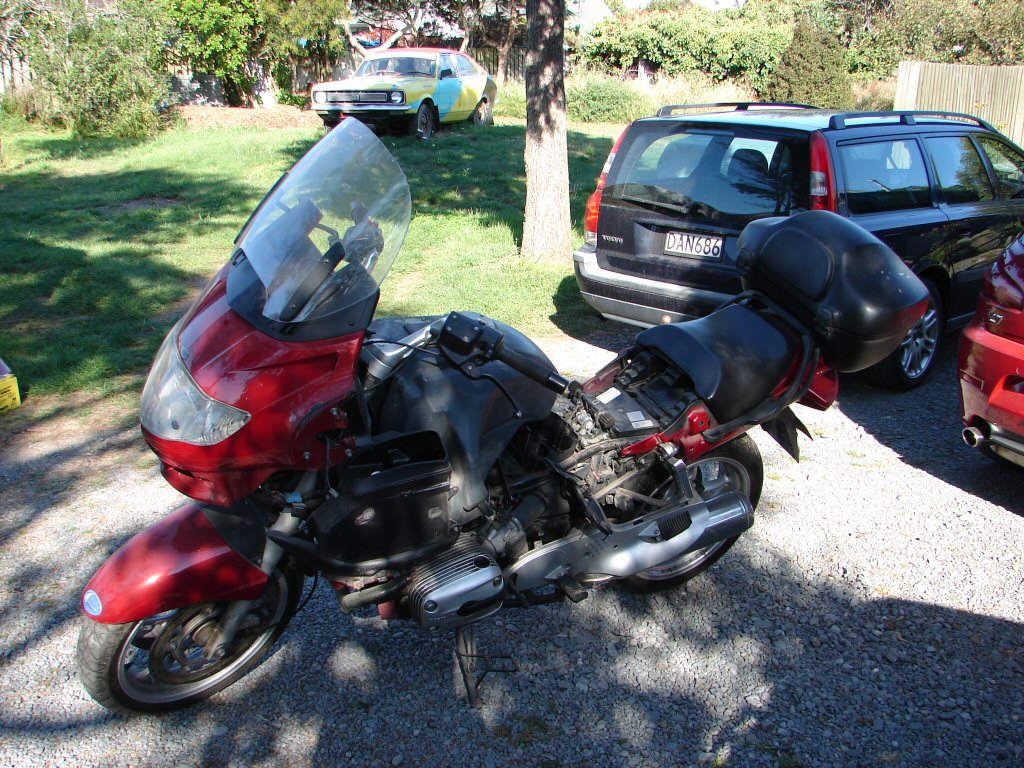
A man whose bikes I have been working on for some time asked if I might look at something slightly more modern for his friend. The bike had not run for 5 years odd, and my man was concerned that his friend might give up riding altogether if his bike was not sorted fairly soon, thus this machine kind of pressed its way into the general scheme of things.
It did not look very pretty when it arrived. Much of the bodywork had been removed in at least one attempt to get the beast going. The tyres were totally flat, and after the two gents had gotten it off the trailer and left, I found that I could hardly move it, so out came the compressor and a few rounds of inflation took place. Even then it was a very ungainly thing to manhandle, and it took several attempts to convince it to jump the edge of the floor slab and make its way into the shed.
There was a reasonable amount of fluid in the bottom of the airfilter housing, and the contents of the fuel tank - a most ugly grey plastic thing - smelt like the residue of a varnish factory, the obvious pong of rotten fuel. Unfortunately this stuff had been pumped around the fuel circuit in attempts to elicit life from the engine, so was now throughout the pump, lines and injectors. This could prove to be a rather expensive exercise if these items were now damaged by the evil smelling goo. Hardly suprising it would not light up.
Fuel tank and various body bits came off, and I emptied several litres of old fuel into some long grass that I wanted to kill. I reckon its a sure thing. I left the tank outside rather than stink my shed out. Various bits of old dross also came out of the tank. No way of knowing what the current status of pump, fuel gauge sender and other bits might be, so I would flush the tank with new fuel and then attempt to pump some through the lines to flush them also.
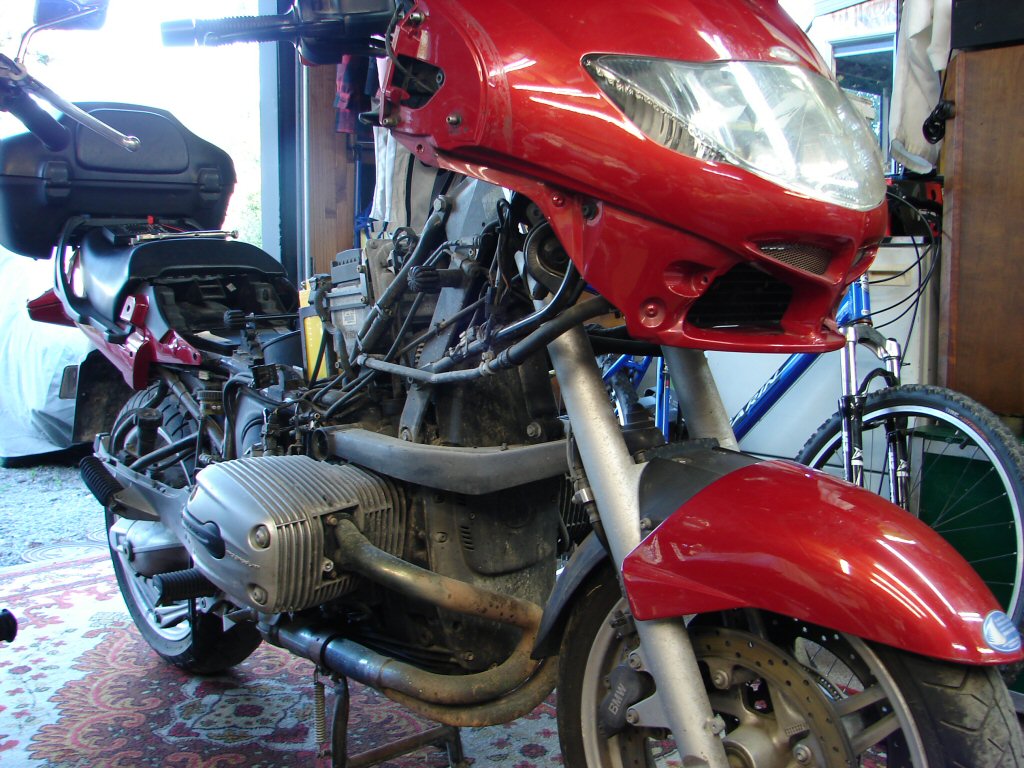
I removed the air intake ducts and cleaned the intakes of the throttle bodies. There was a lot of old fuel which had decayed to the consistency of a light oil, as all the lighter elements had evaporated off. The injectors were removed and cleaned but there was no way of ensuring they would be happy to supply fuel in future. Attempting a start would probably be the ultimate proof. All these bits got refitted and now looked like this.
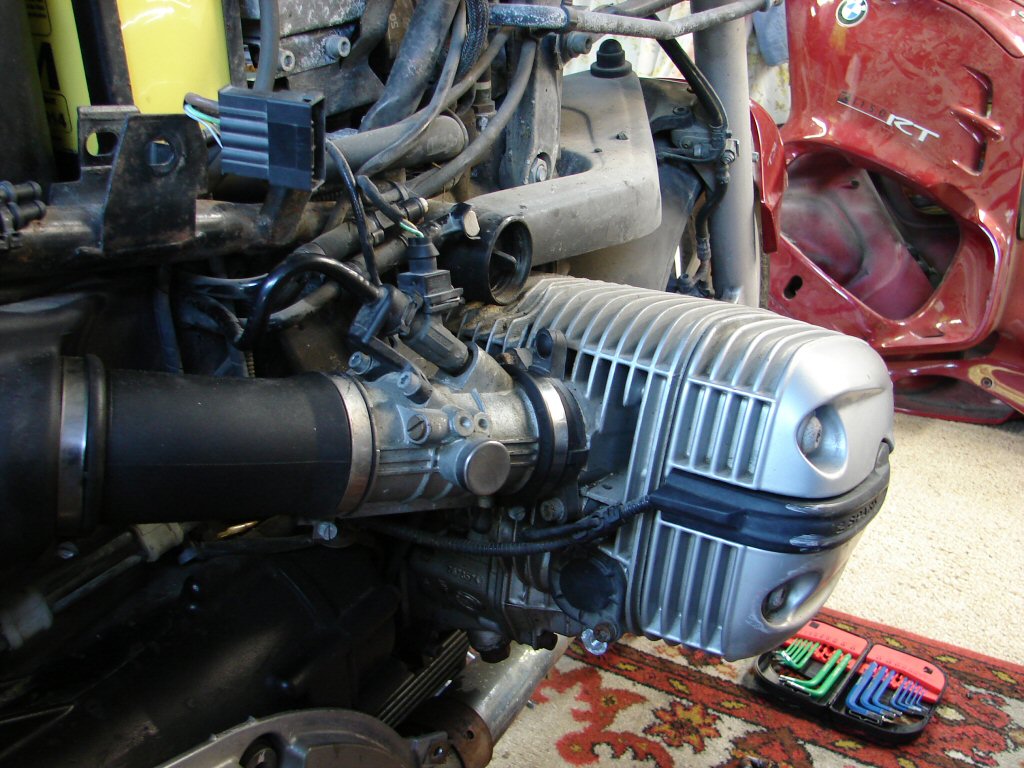
The fuel tank still smelt really bad even though it had been drained and left in the sun with the filler neck removed to help evaporation to take place. Adding some fresh fuel would likely be the best way to overcome the old fumes while rinsing the submerged fuel pump and remaining fuel lines. Only by powering it up would I find if the pump still worked.
The same would apply to the fuel sender unit which would likely contain a low fuel light switch, and all of these things are relatively delicate and could easily be gummed up by old fuel residue. The annoying thing is that it will all need to be reassembled to test, so if there are still problems it will have to come apart again.
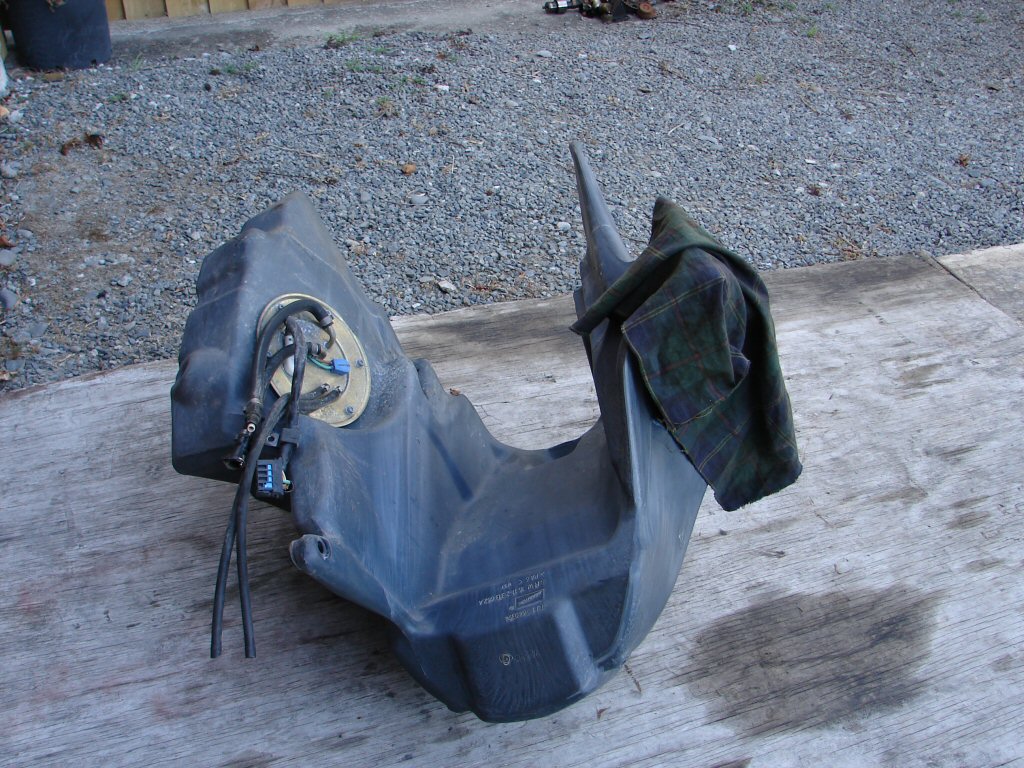
Fuel tank refitted and fresh fuel added. All fuel lines and drains reconnected and electrics reinstated. I decided to remove the spark plugs to allow the engine to breathe some fresh air in order to expel any unwanted residues. This model has 2 spark plugs per cylinder, one underneath the cylinder and one in the top centre. BMW thoughtfully provides a plastic tool in the toolkit for removing the coilpacks for the centre plugs, but on this bike at least, the tool was totally useless. I used some improvised means involving two large screwdrivers to prise them out then remove the plugs.
I placed a container beneath both lower plug apertures before cranking the engine over on the starter. A large dollop of what appears to be engine oil got spat out of the left cylinder. This is the cylinder which hangs down when the bike is on the sidestand, and I am not sure if this may play a part.
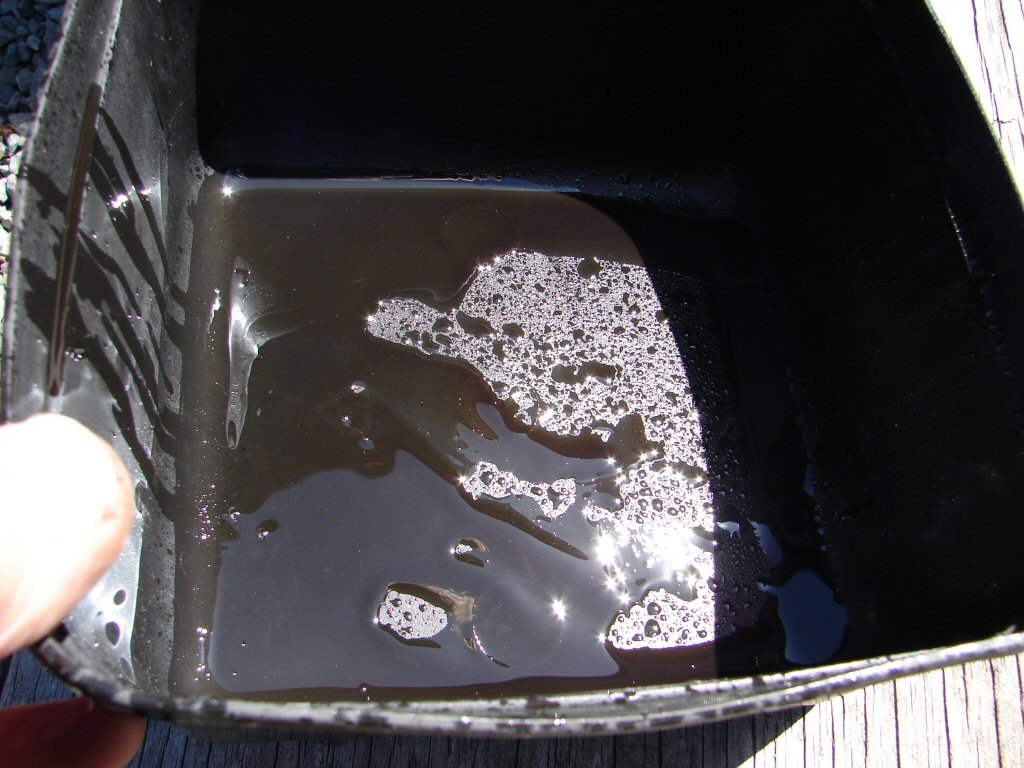
I had removed the injectors from the throttle bodies to observe whether any fuel was issuing forth, but not a drop. Nor could I hear the fuel pump in the tank operating, neither when the key was initially turned on, nor when cranking on the starter.
I suspect that we would not be experiencing any great amounts of spark though..
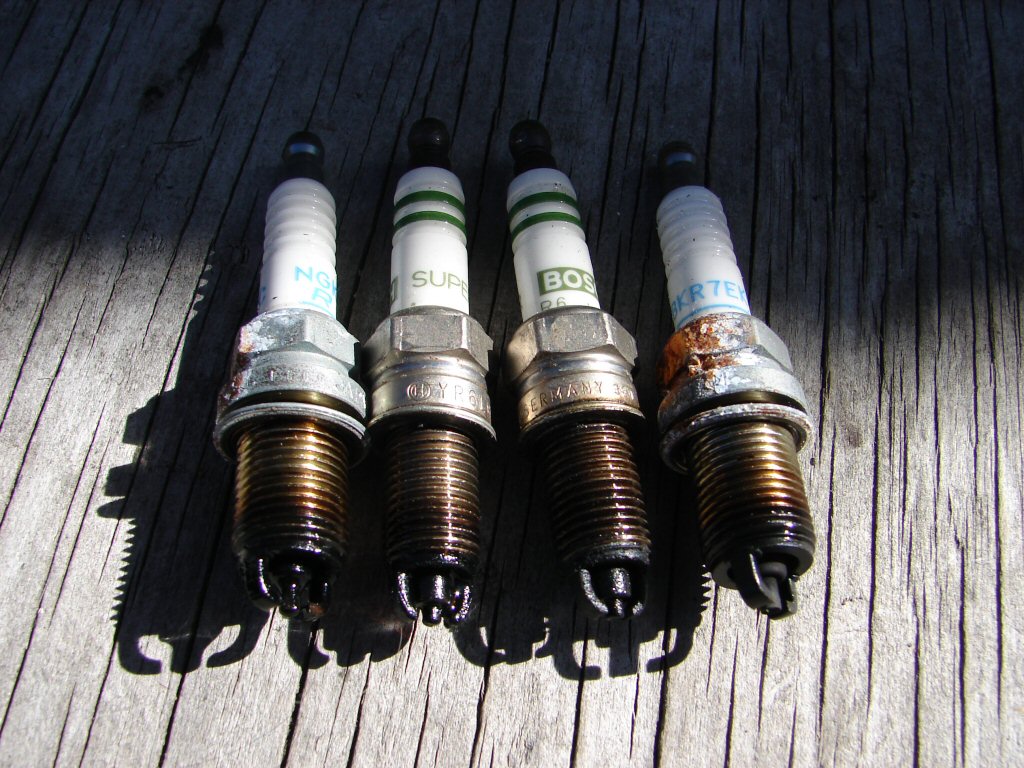
So the current status is this. Either the fuel pump has failed, or the injectors are gummed up, or both. It does not look like it is possible to remove the fuel lines from the injectors without damaging the retaining clips, but the lack of any whirring noises from within the tank would tend to signify that the pump is not running. I now need to ensure that my methodology is correct before attempting to extract any more bits - which may or may not prove to be at all serviceable.
I have a vision of cash registers whizzing over like one-armed bandits.
Lawdy.!
Having completed other projects I came back for another go at the Beemer. Courtesy of the internet I found a wiring diagram and a picture of the layout of the fuse and relay compartment. Fuse No.6 was for the fuel pump, so I plucked it out and tested it. Failed. I fitted another fuse and tried turning the key on briefly a few times. On the second attempt the new fuse went off with a slight pop and rewarding flash. Looks like the fuel pump is coming out of the tank then.
I also did a search for new fuel pumps and found several places in the USA selling them and stating that they were still doing business. I shall remove this one first to see what it looks like. I shall also try another new fuse with the fuel tank wiring disconnected, as there are other places being supplied by the same fuse. We are narrowing the field.
Ok. Fuse test with tank disconnected proves no fault now exists, so fuel pump is No.1 suspect. Tank off and drained. All internals removed. Like this.
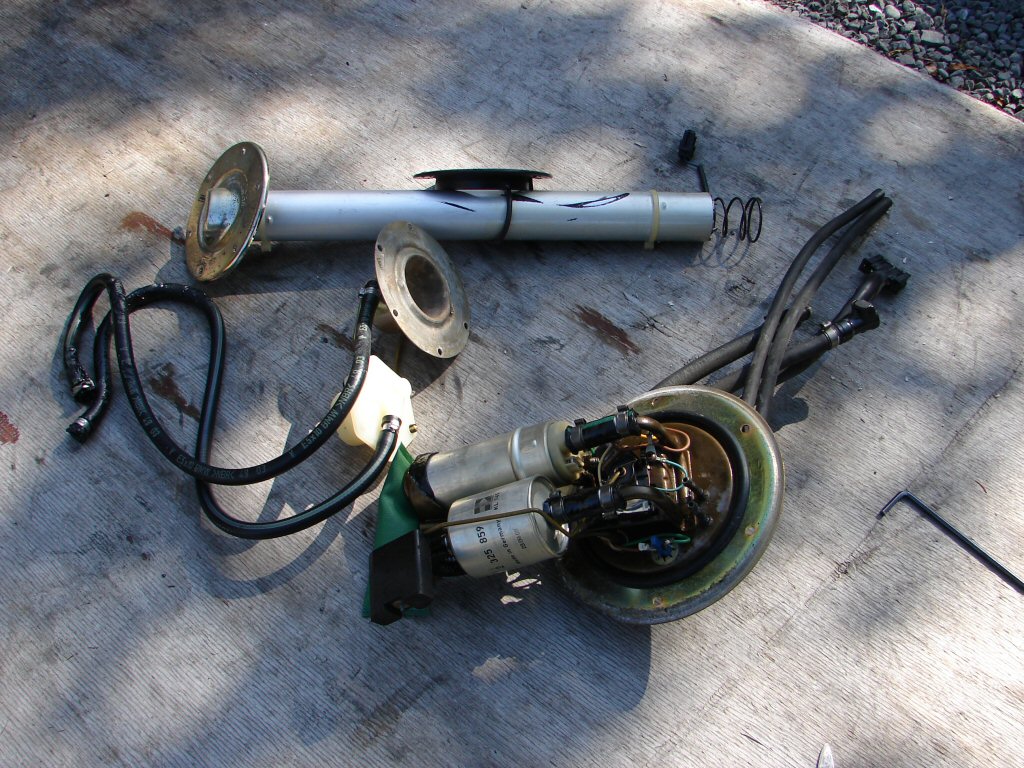
Whatever was in the fuel tank for all those years has turned the internal hoses into some kind of sticky mush. No doubt the inline filter will not be worth trusting.
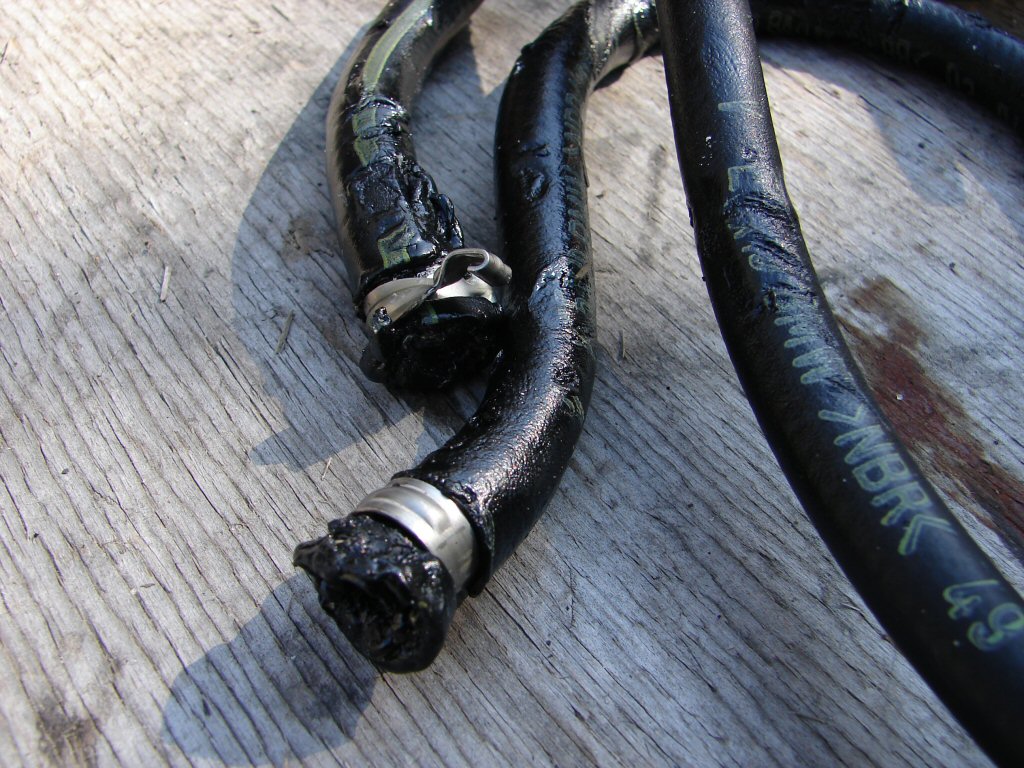
I located a complete replacement kit from the USA, with pump, filter, strainer, rubber pump mounting, hoses and clips. I have ordered it today and hope it will make its way past any blockades. Holding breath..
Meanwhile work shall continue. The incredibly expensive spark plugs are history thanks to being doused in oil. That fact was a tad worrying. Some excess oil was ejected from the cylinders while cranking the engine on the starter. That too seemed abnormal. The starter motor would semi stall about every 4th or 5th revolution, which indicated it was finding the job of turning the engine very difficult. Could some form of seizure have taken place. Are the rings damaged. Is there sufficient oil in the engine.
There is a sight glass on the side of the crankcase to display the engine oil level. Obviously it was not going to be much use.
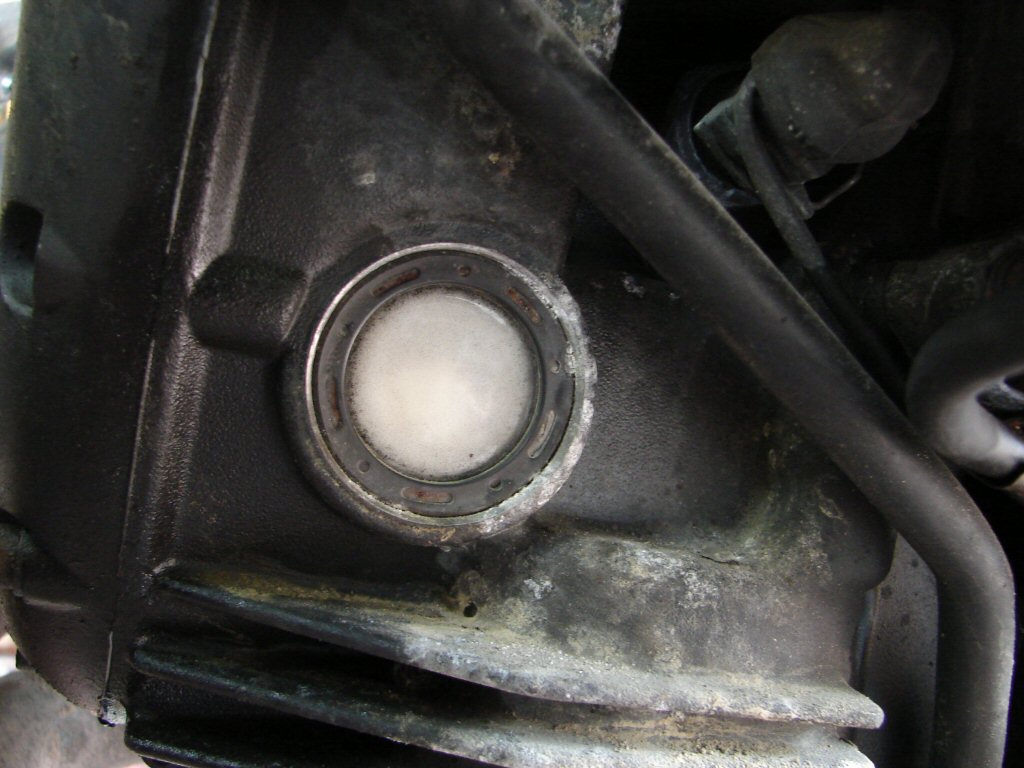
It would be necessary to drain the oil to check its condition and quantity. I did so. While it appeared to have done very few miles, there was 7½ litres of it.! That is close to twice the amount that it should have. No wonder the thing was struggling. It would seem that oil was being hydraulically forced past the piston rings into the cylinders, which explains the presence of oil in the cylinders as well as the demise of the gold plated spark plugs.
I do not even wish to contemplate where else oil may have been forced to go. Obviously, without a working sight glass, more and more oil has been added over time. This would also have to be rectified.
I have just found another supplier in the USA who is now shipping a full set of spark plugs, two of each type, plus a new sight glass. Total price including shipping is less than the spark plugs alone would cost here - even if I could get them while a state of emergency exists. The spark plugs are approaching $50 each in NZ, although I could not even find a local supplier who had them in stock even if they had been open. Sheesh.
This is a real problem with European motorcycles. There must be numerous spark plugs which would do the job, but BMW in their wisdom either specified the most expensive type, or had them made to their own specification. This approach makes maintenance of such machines a very costly business, even if the owner is up to doing the work themselves.
Despite the fact that the starter was now enjoying a much easier time of things, it would still occasionally sound unhappy, as if it had a dry bearing somewhere. No doubt if I fail to address it, the bike will be back again in short time, so today I would see what could be done. It lives here.
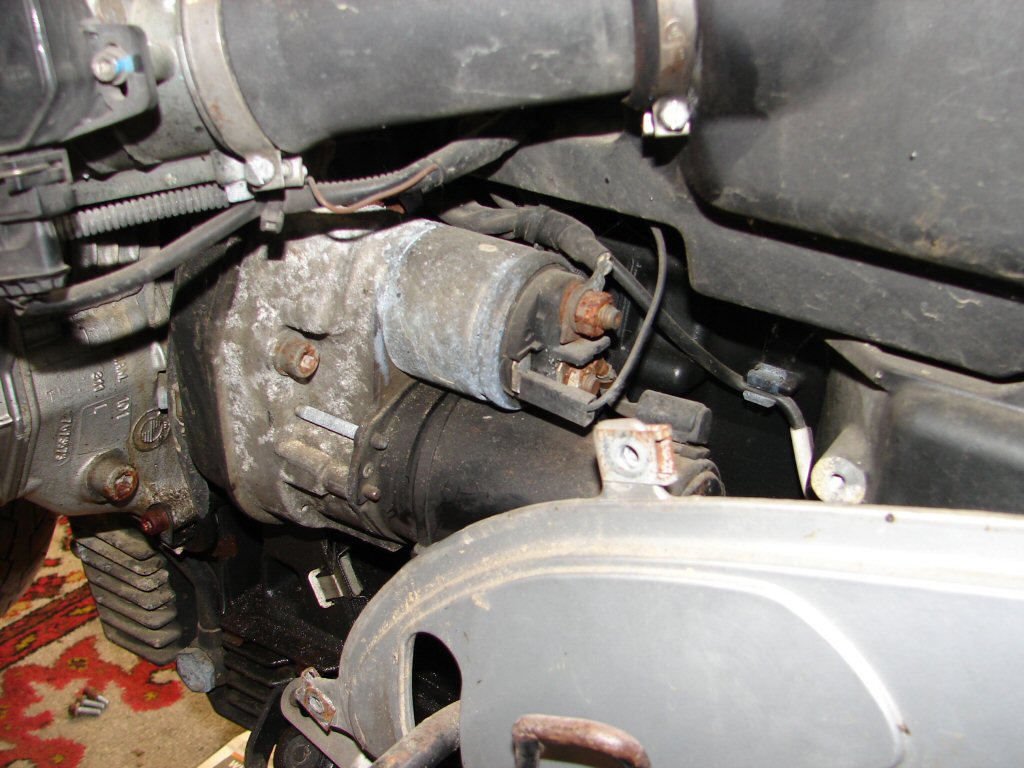
I figured it would be much easier to deal with if I removed the large footrest plate first, so that came off, complete with all the gearlever linkages. After that the starter was easy to remove being only held in by two allen bolts.
I stripped the alloy housing off it, plus the end cap covering the brushes, then cleaned everything and oiled all the bearing surfaces I could access. It came up looking a tad healthier.
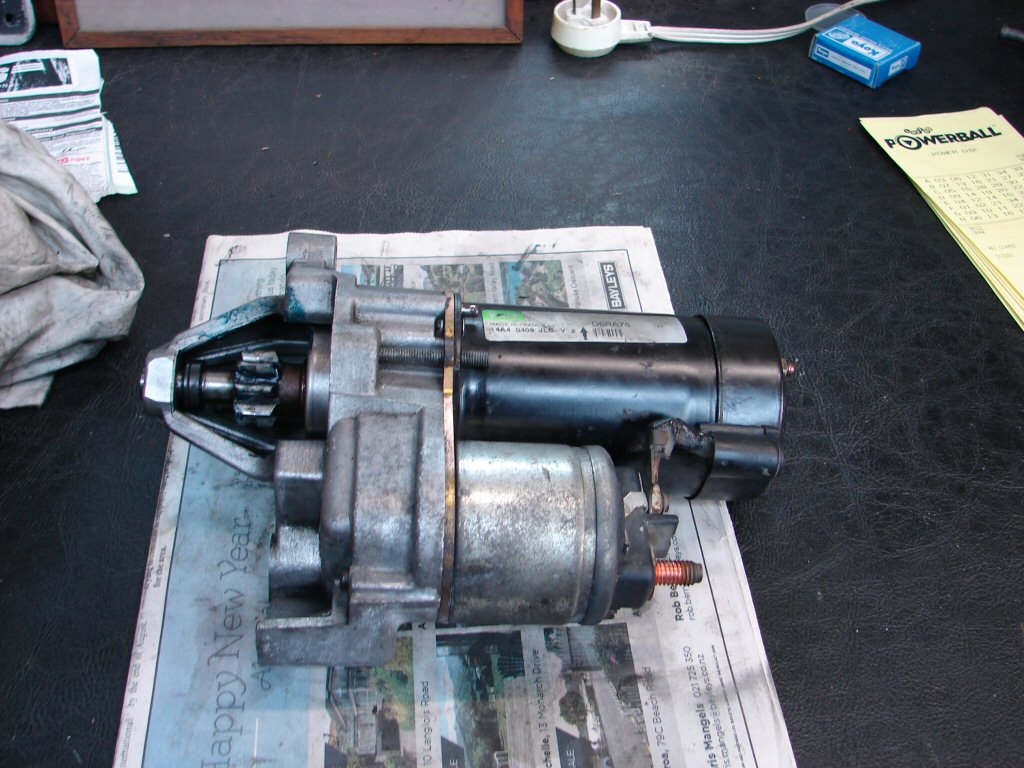
A good coating of grease on the teeth of the pinion and it slid back into place with no protests at all. It is always easier refitting stuff now you have learned how it all fits during the disassembly process. Somewhat more difficult when the owner has removed stuff before you get it, so I am not entirely looking forward to putting the bodywork back on this bike.
All good here though, and soon everything was back where it had been and all tightened up.
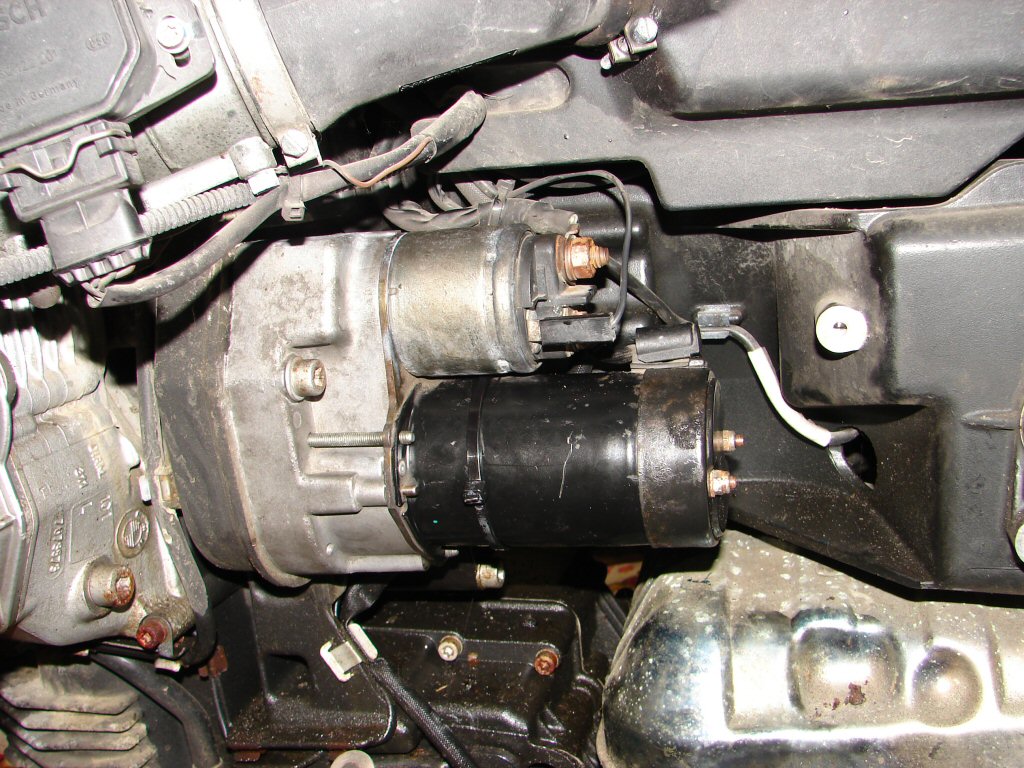
I thought it would be wise to test it before refitting the footrest plate, just in case I had to remove it again. I reconnected the battery and hit the button. There was a great nothing happening. Damn. I checked to see if there was power getting to the solenoid wire. No. Alright then, something has changed on the bike to prevent the starter from operating. It did not take long to find that I had managed to put it in gear while I was removing the gear linkage. After that it lit up and spun over happily with no more odd noises. Choice.
So that gets us to here. Nothing more can happen until the fuel pump kit shows up from the USA. I have been notified that it has been despatched, and I trust that the US freight is something near being as prompt as it has been in the past. They certainly charge handsomely for it - $72.00 in this case.
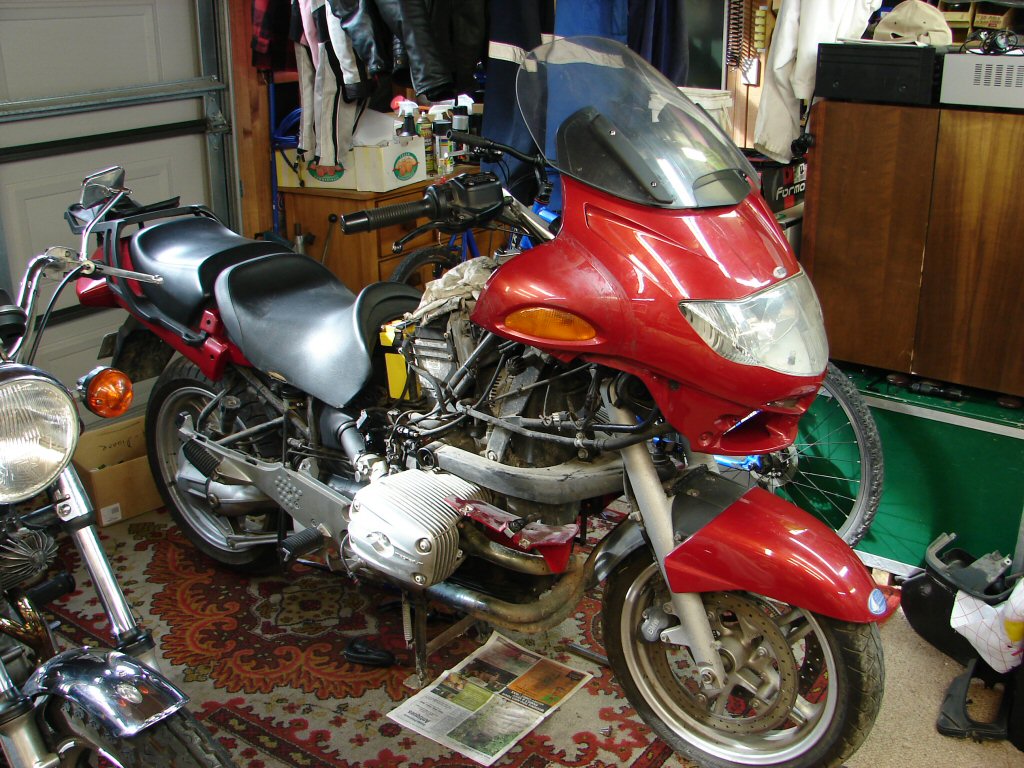
I kept myself amused a bit longer by hosing off all the bodywork. I had already repaired the front indicator housings and refitted them, although there is a bit of cleaning up still to be done there as well. At least stuff is now going back on.
Next manoeuvre was to strip all the manky bits off the fuel pump mounting plate. The hoses were all ruined by the old fuel, and everything was covered in a sticky coating of varnish-like substance.
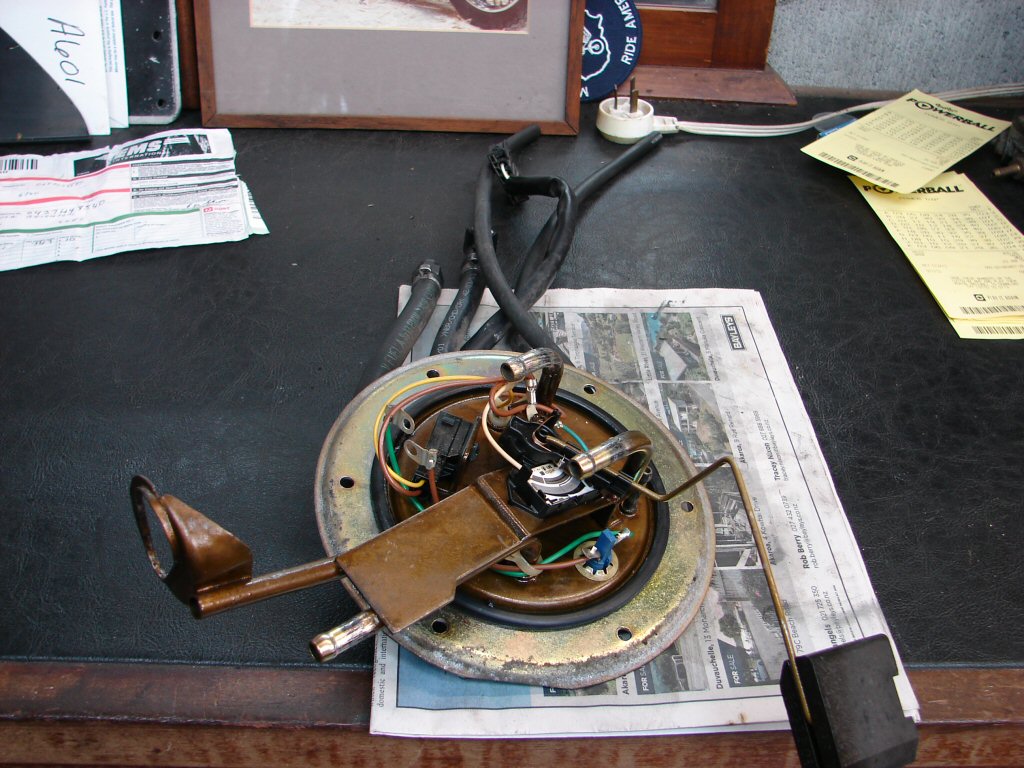
I tested the fuel gauge sender with a multimeter, but was unable to get a sensible reading when moving the float arm. The small circuit board which has the variable resistance printed on its surface was also completely covered in the varnish stuff, but by experimenting with a few fluids I found that Methylated spirits would wipe it off, so I spent some time carefully wiping the entire surface of the board clean, after which I got a steady and reliable reading as I moved the float up and down.
I could not entirely make sense of how the sender unit worked, so I hope it does so, but it came up pretty well, and it would be a bitch to have to pull any of this stuff out for a second time if it does not. As can be seen, every other part is liberally coated with stickiness. I am not sure if fresh fuel may gradually dissolve this residue, but as all the other working parts will be new, it should not matter anyway.
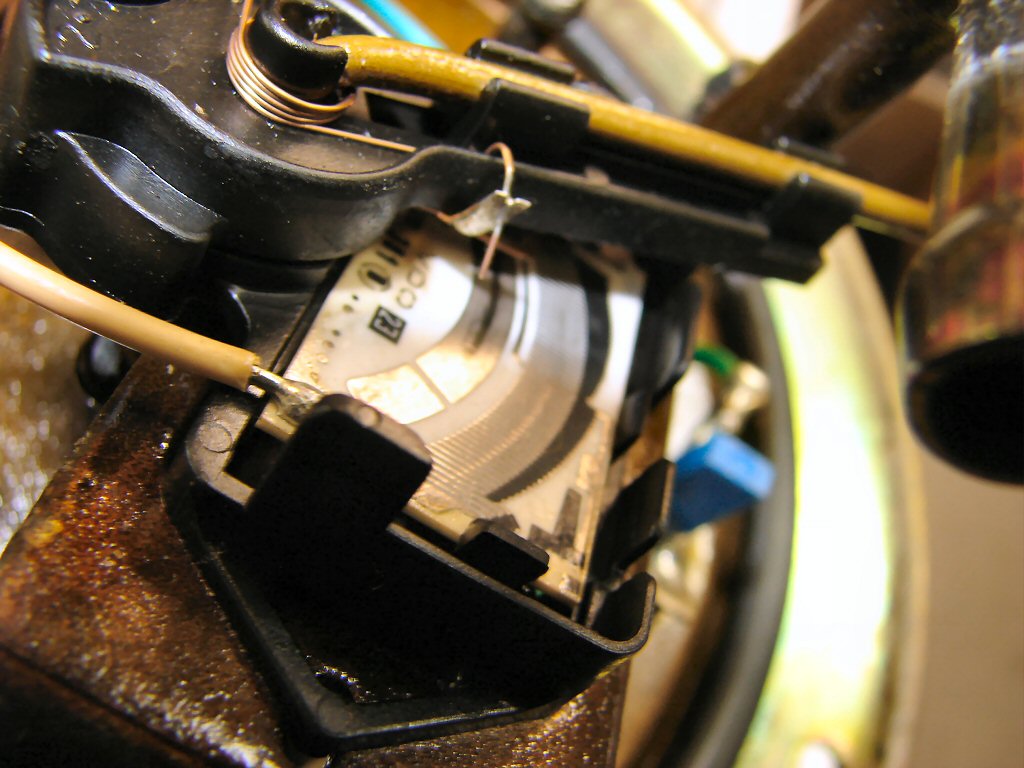
I also fitted new breather and drain hoses to the filler neck, refitted that, then refitted the low fuel light unit which mounts from the top of the tank, but also secures the two new hoses at the lower end, so everything I can do in there until the new pump and filters arrive is now done.
Six and a half weeks later, and the fuel pump kit arrived today. I immediately fitted it to the housing along with new filter and provided hoses and clips, although I did use a piece of rather more substantial hose to mount the pump on, as it provides most of the support for the pump as well as carrying the output.
Currently looks like this..
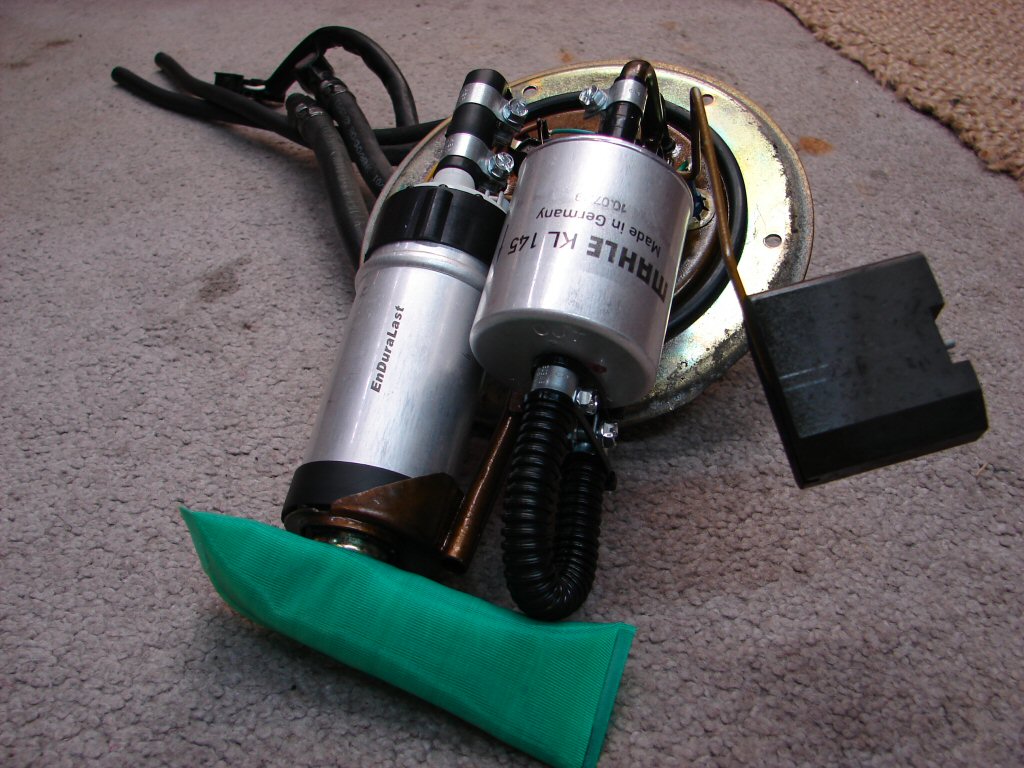
Tomorrow I shall attempt to fit it back inside the tank.
The fuel pump assembly went back inside the tank without too much bother, and I added two gallons of fuel so I could make sure it didn't leak before putting it back on the bike.
It didn't, so I did. So large and ugly it is, only its mother would love it..
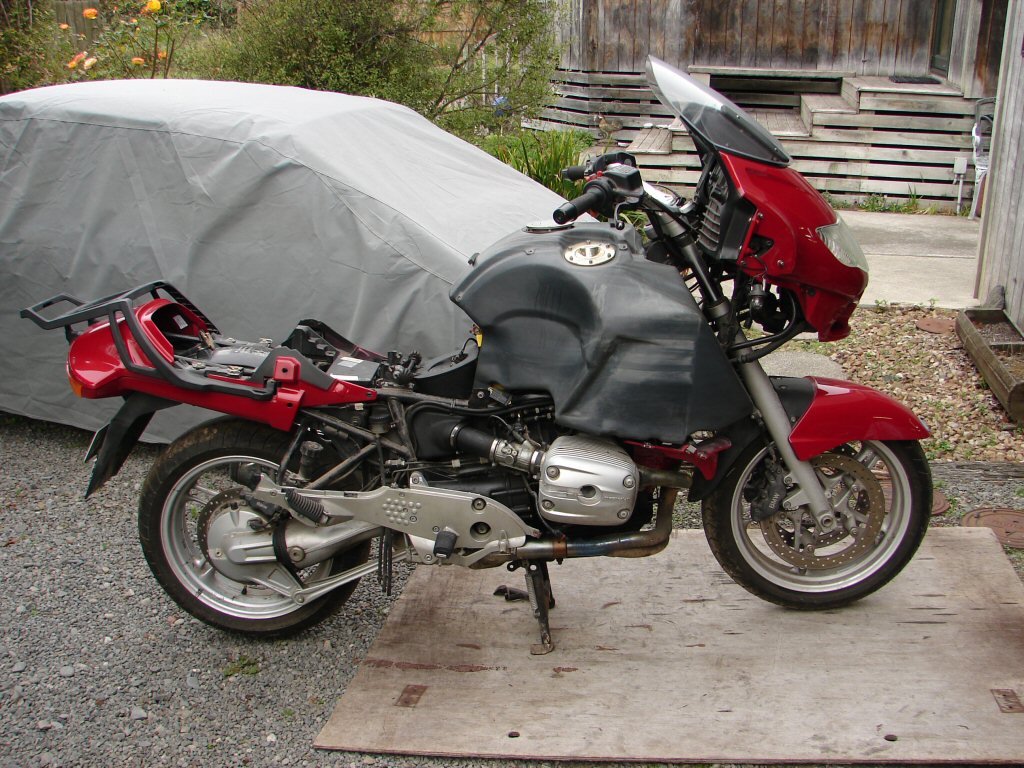
Next step was to test for fuel pressure by allowing some fuel to bleed off at the point where the two lines connected to the injectors, as the injectors were still off the bike. With the aid of a couple of containers I turned the ignition on in a few short bursts until fuel gushed forth. A welcome sight indeed. What came out still contained some of the old nasty stuff, so I dumped that well away from the garage. That smell is rather unique but one of the worst.
I had previously disconnected the low voltage to the ignition coils so that I could crank the engine over without risking upsetting the coils, so the tank now had to come off again in order to connect everything back up. The tank was just sitting so that was an easy task. Once completed I bolted the tank in place, then added the glovebox. Just to have bits going back on is a huge morale booster.
The generous proportions of the glovebox are in keeping with those of the fuel tank.
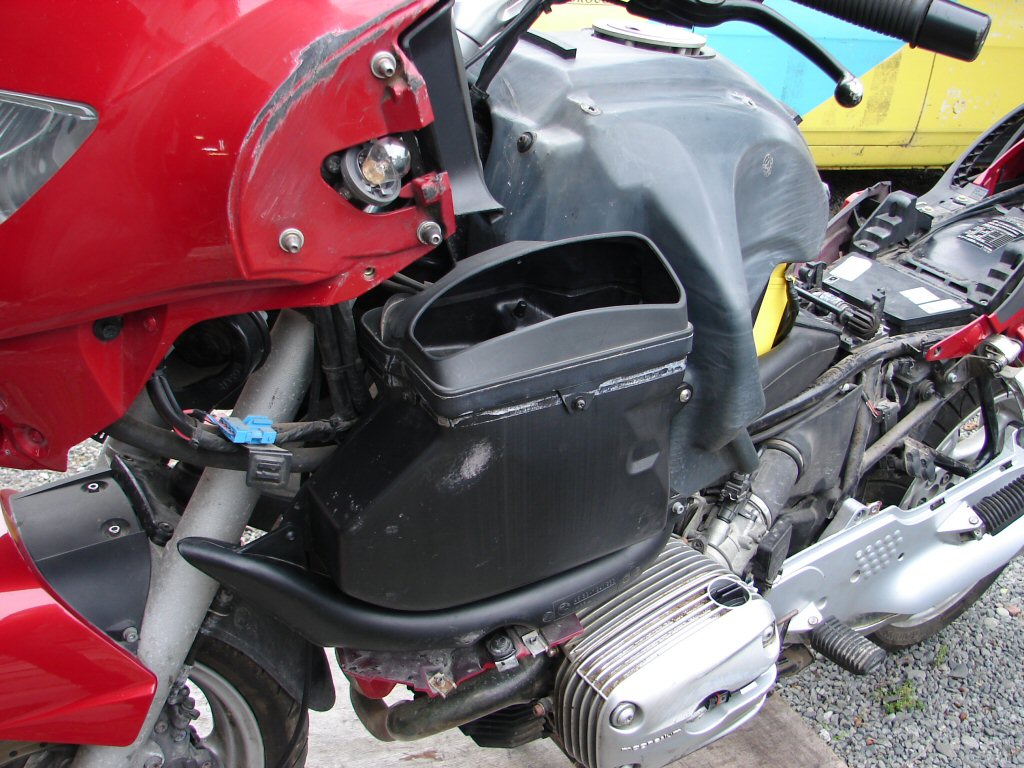
As we are now once again stuck for want of parts which are hopefully being liberated from wherever they have been dormant for the duration of the most restrictive period of our lockdown, there is not much more that can be restored on the bike. I did fit the tank cover though, as that will not interfere with anything else still to be replaced.
Whoopee.
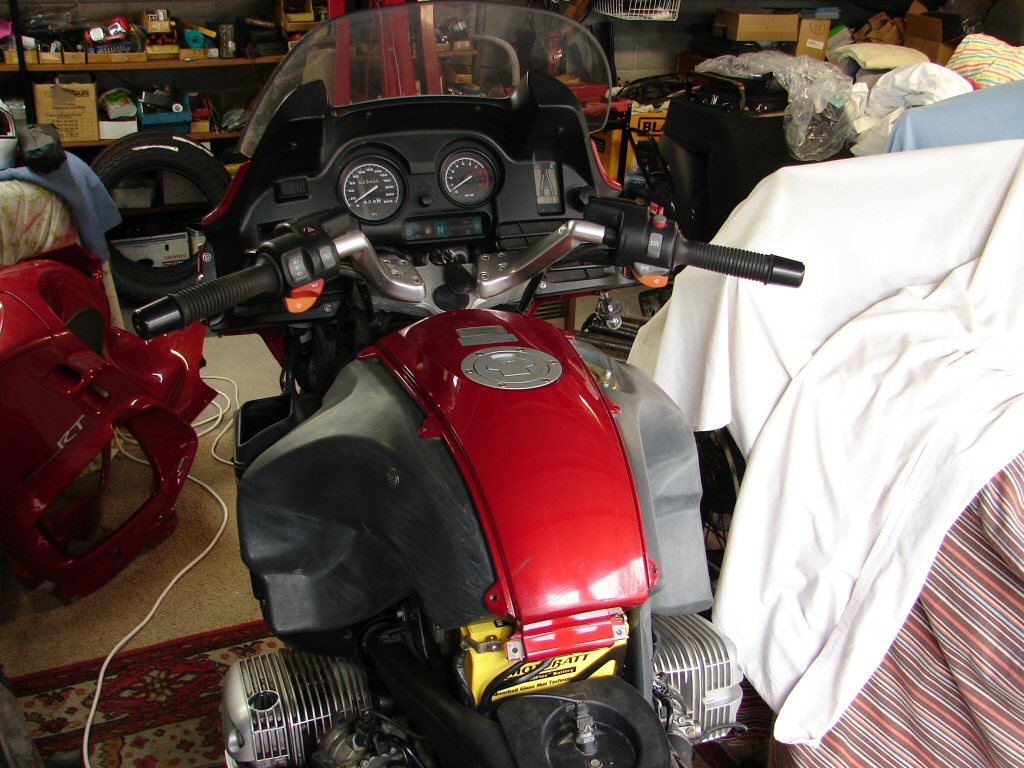
I gave the seats a coat of Armourall, and polished the tail end of the exhaust pipe, being the only chrome visible on the bike. It is certainly beginning to look like it is coming back to life.
I found a couple of old primary spark plugs inside the tail housing behind the rear seat, so I cleaned them up and fitted these plus the secondary plugs which came out of the bike and looked like they would never spark again. I then attached a car battery by jumper leads and cranked it over for some time before it reluctantly fired up. I was using the cold start lever and I think it probably did not require it, so it may have started quicker if I had not. It ran well enough but clouds of smoke began to issue out of the exhust, and the oil light had not gone out, so I shut it down. I tried another start and this time it fired very quickly, so I was reassured that it really did want to go. I figured that the exhausts were probably full of oil as the engine had been, so this would burn out fairly quickly, but the oil light was the worry.
The oil pressure light switch is easily accessible on the left side, so I disconnected the wiring and loosened the switch by a few turns. Another brief start had oil being forced out around the threads, so it did have oil pressure but the switch was faulty. Definitely the best scenario. I decided to ride it.
As I had only poured 2 gallons of fuel into the voluminous tank I decided the best move would be to head to the gas station across the ponds and about a mile from me. As I had been told, the bike became extremely managable the moment it was moving, and apart from feeling at odds with the double indicator switches I was soon feeling at home in the cockpit. Best gearchange I have experienced on a shaft drive, and the suspension felt very well balanced and absorbed bumps with ease despite the bike's high mileage. Everything worked except for one Q/H headlight which I made a note to replace while the fairings were off. Pleasingly, the oil light went out as the engine warmed up, and it behaved normally for the rest of the test. The trip was completed in fine style, and the bike would now restart in an instant. A much happier unit.
As I took the ride at night I did not notice when the smoke stopped happening, but it was running clean when I got back. Removing the plugs the following day showed that it had only been running on the primary plugs. As the secondary plugs mount vertically from beneath the cylinders, they had been completely submerged in oil, possibly for some years, so hopefully it was just the plugs and not coils or worse.
From this point I amused myself by making repairs to damaged bits of the fairings while waiting for the spark plugs and sight glass to materialise from the USA.
And that happened today, so in all it has been 11 weeks since these parts were ordered. I am just real glad they showed up. The spark plugs have gotten even fancier than those that were fitted before.
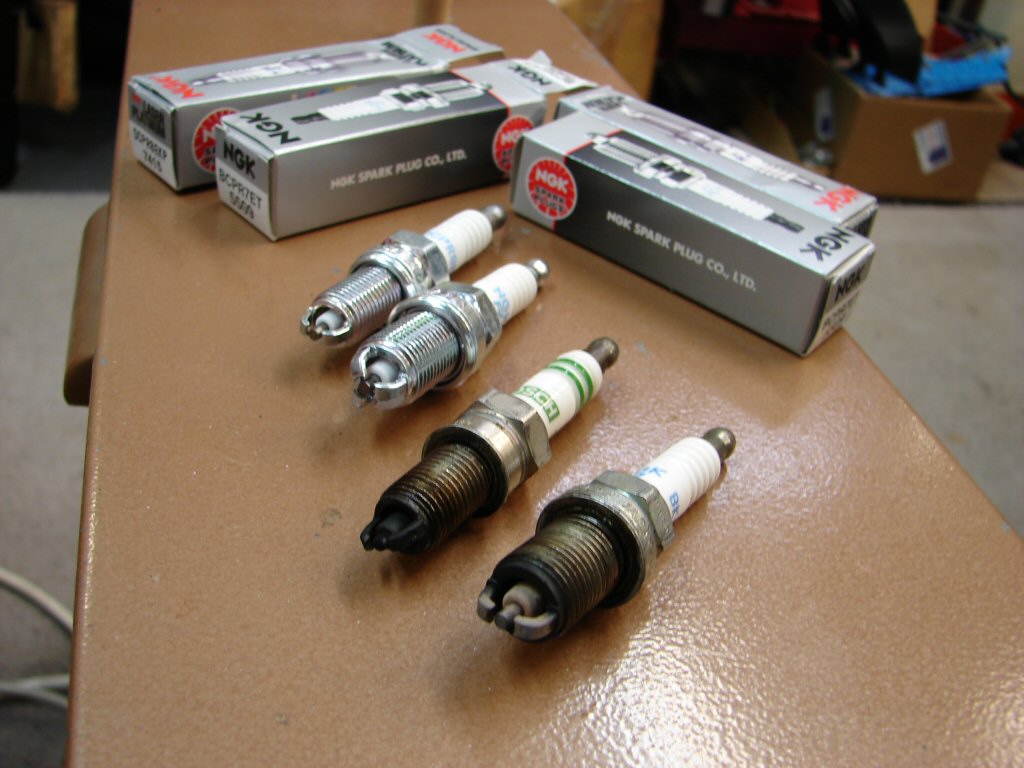
I fitted the new plugs and fired the bike up briefly with the primary plugs disconnected. It started and ran no problems, so I know the secondaries are both now ok. Next thing was to drain the oil so I could attempt to remove the opaque sight glass. The original item here has a perspex lens, so I adopted a cunning method of heating the end of a screwdriver with a gas flame, then pushing it through the perspex to create a hole I could operate through without introducing any splinters of perspex getting into the sump. It worked a treat and exposed one of the holes in the backing plate that the oil enters through. I screwed a large self-tapping screw into the hole and used a claw hammer to extract the whole unit. That was rather easy considering I was expecting a fight. However, despite cleaning all the corrosion from the aperture and smoothing the leading edge, the new glass refused to go in. This one is real glass, so presumably it will never suffer the same fate as the last, but it did mean one had to operate pretty carefully while trying to drive it in. Despite factory advice to fit it dry I chose to apply the lightest smear of silicone sealant, as I do with oil seals, to help ease its entry whilst then keeping moisture out and oil in. It finally got the message and was suddenly on its way, so I lightened the force byt kept tapping it until I was sure it had reached the base of the recess.
The oil got refilled and for the first time I was finally able to see some oil appear behind it. That will make life a lot easier and prevent a repeat of overfilling.
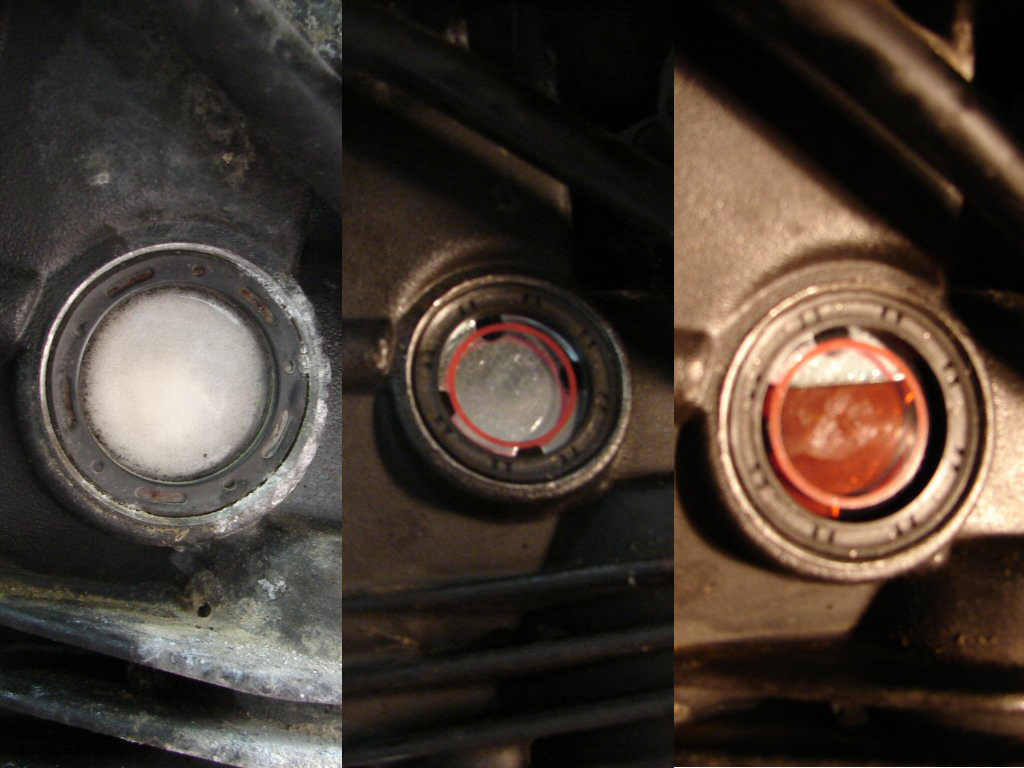
I would be wise to attempt another short test ride to ensure the sight glass is leak free before beginning the job of refitting the bodywork, as that will render it inaccessible. Considering the effort involved in pressing it in I would be astounded if any oil got past it, but best to be sure.
Test ride was completed and all was well, so on went the bodywork. Another test ride to make sure all the electrics worked prior to attempting a wof test. Only the oil light was still misbehaving, but mostly went off when the motor warmed up.
Sure looks better with its pants on...
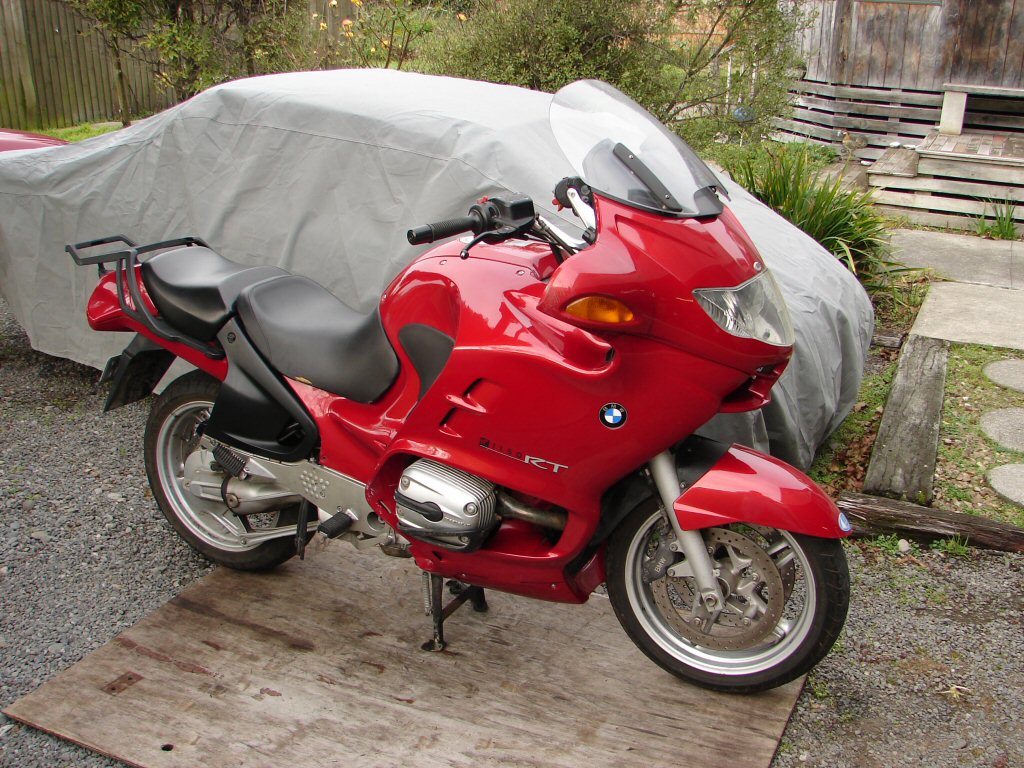
Come the Monday I phoned my wof guys and was able to take it straight in. Rode very nicely although the power brakes are rather violent if one is too enthusiastic with lever or pedal. The testing chap got me to ride it in the carpark to demonstrate the brakes, and both ends elicited a total and dead stop, which impressed him but created a new problem. There was suddenly clouds of blue smoke from the exhaust. I had already told him about all the excess oil which had been displaced, so it was decided I should ride the bike up the Tunnel road to burn the new lot off. I did. It took two runs before it was all clean again. I suspect that some of the oil I saw in the base of the airfilter housing may have shot down the inlet tracts because of my panic stops.
No more problems after that and I left with the new wof. Oil light was now staying on all the time, so when I got home I removed the wiring connection from the oil pressure light switch and cleaned the connections. Clipped it back together and bingo, it went off a second after the engine started. Two more stops and starts showed it was indeed happy, so very pleased to have resolved that without needing another part. With the switch only handling milliamps to the ECU rather than operating a lamp it does not take much moisture to defeat it. I guess it had five years to do it though.
I am pleased with how the bodywork has responded to being cleaned and a few bits straightened up, so now it fits together without offending me. Looks quite smart really.
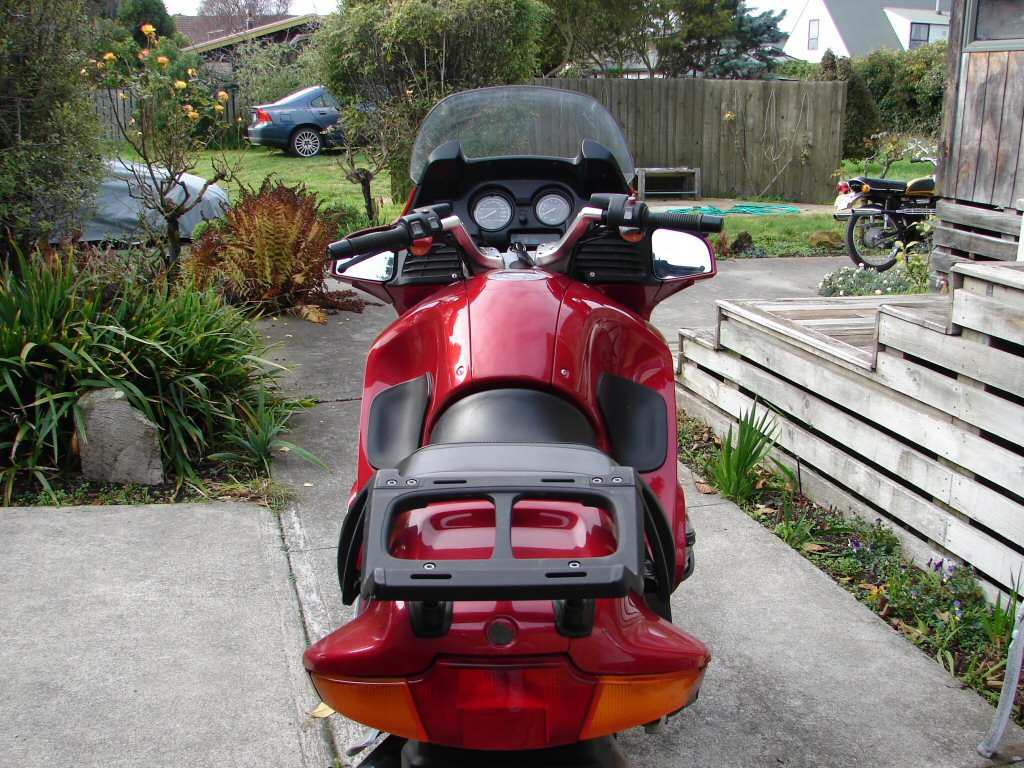
The bike should always return to the customer looking better than it arrived. No problem here then. But I do get to take a little more pride in the finished article when I feel happy with its presentation.
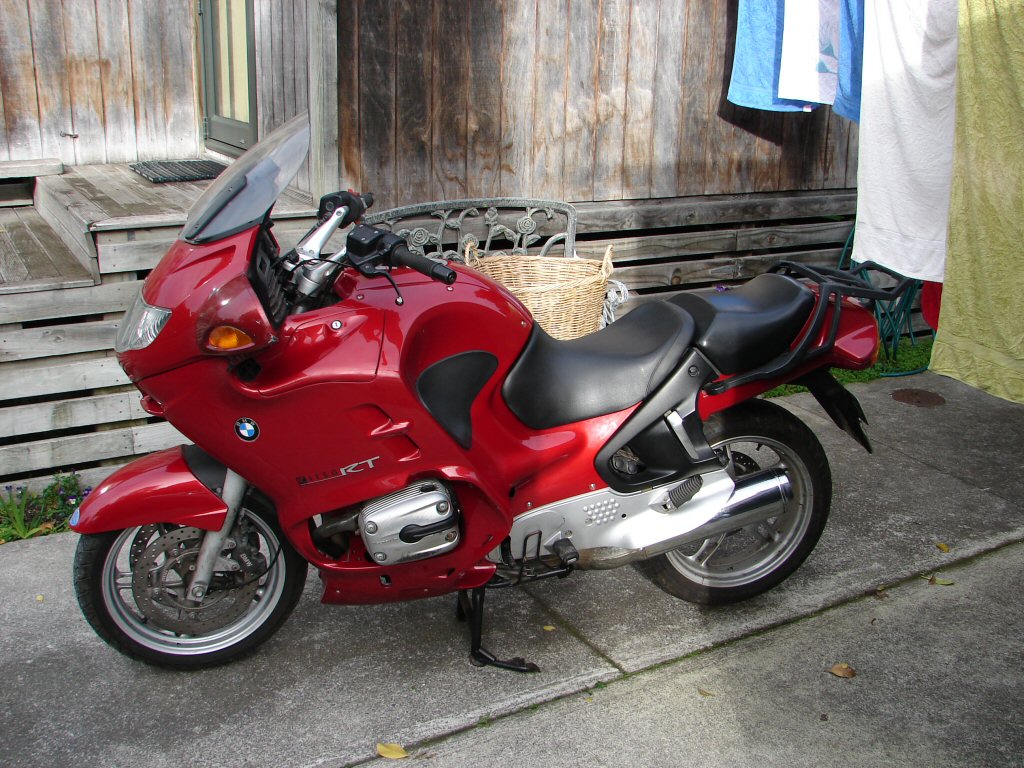
Delivered the bike two days later, so my BMW experience has come to an end. Not bad to work on but spare parts were the major holdup. Makes me appreciate how available and cheap parts are in this country for 70's Brit bikes. I shall remain mostly in that camp.
Progress to 24 June 2020.